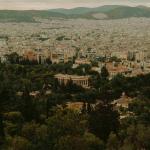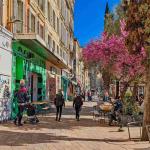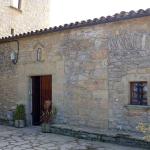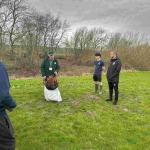Thessaloniki gets ready for its metro launch in November
The underground rapid transit lines have been under construction for almost two decades due to various project delays
 TheMayor.EU logo
TheMayor.EU logo 
The underground rapid transit lines have been under construction for almost two decades due to various project delays

The cross pinnacle on the Tower of Jesus Christ will be ready to receive visitors in 2026 on the centennial of Gaudi’s death

Now you can get your wine in Talence by paying directly in Bitcoin

That’s because the state has to spend money on updating the railway infrastructure rather than subsidizing the cost of the popular pass

Steffen Romstöck said that he would respect the residents’ choice and would take over the helm of the municipality, even if he didn’t run

The measure, which will come into force from 1 January 2025, will be partial and temporary…for now

Rethinking renewable energy sources for the urban landscape

But operating them is still illegal under the country’s legislation

The examples, compiled by Beyond Fossil Fuels, can inform and inspire communities and entrepreneurs that still feel trepidation at the prospect of energy transition

Now you can get your wine in Talence by paying directly in Bitcoin

Rethinking renewable energy sources for the urban landscape

The examples, compiled by Beyond Fossil Fuels, can inform and inspire communities and entrepreneurs that still feel trepidation at the prospect of energy transition

The underground rapid transit lines have been under construction for almost two decades due to various project delays

Plus, it has a unique modular design that allows it to be shortened and lengthened like a train

At least, that’s the promise made by the mayor of Paris, Anne Hidalgo

Despite its church-y name, the district has long been known as the hangout spot for the artsy crowds

At least, that’s the promise made by the mayor of Paris, Anne Hidalgo

Hostal de Pinós is located in the geographical centre of the autonomous region

On the eve of the new academic year, the ranking considers several distinct but essential factors


Following a successful trial phase, these quiet areas will now be available on all main routes in the country

The academic institution shows a deeper understanding of the well-being of its students











The heyday of this picturesque town is associated with the reign of the lords of Rožmberk (1302 - 1602), who made Český Krumlov their seat. At that time, Krumlov lay in a place where there were contacts between the Czech hinterland, the Austrian and Bavarian Danube area and northern Italy.
This was also reflected on the face of the city and the castle, which was imprinted with the unique appearance of the Italian Renaissance. At the end of the 17th century, during the reign of the Eggenberg family, a Baroque theatre was built, and the castle garden was renovated.
In the time of the Schwarzenbergs, Český Krumlov acquired its Baroque appearance. From the 19th century onwards, besides the abolition of the city walls and gates, no major changes took place and the centre thus retained its historical appearance.
Since 1992, it has been inscribed on the UNESCO World Heritage List.
Source: Český Krumlov Town Hall
Český Krumlov is located in the South Bohemian Region of the Czech Republic. The town has an area of 22.16 square kilometres and a population of 13,056 inhabitants (as of 2018, CZSO).
The local economy is strongly dominated by the tourism sector.

The town boasts 300 listed buildings in the historic centre, the second largest castle and chateau complex in the Czech Republic inscribed on the UNESCO World Heritage List and the oldest Baroque theatre in the world.